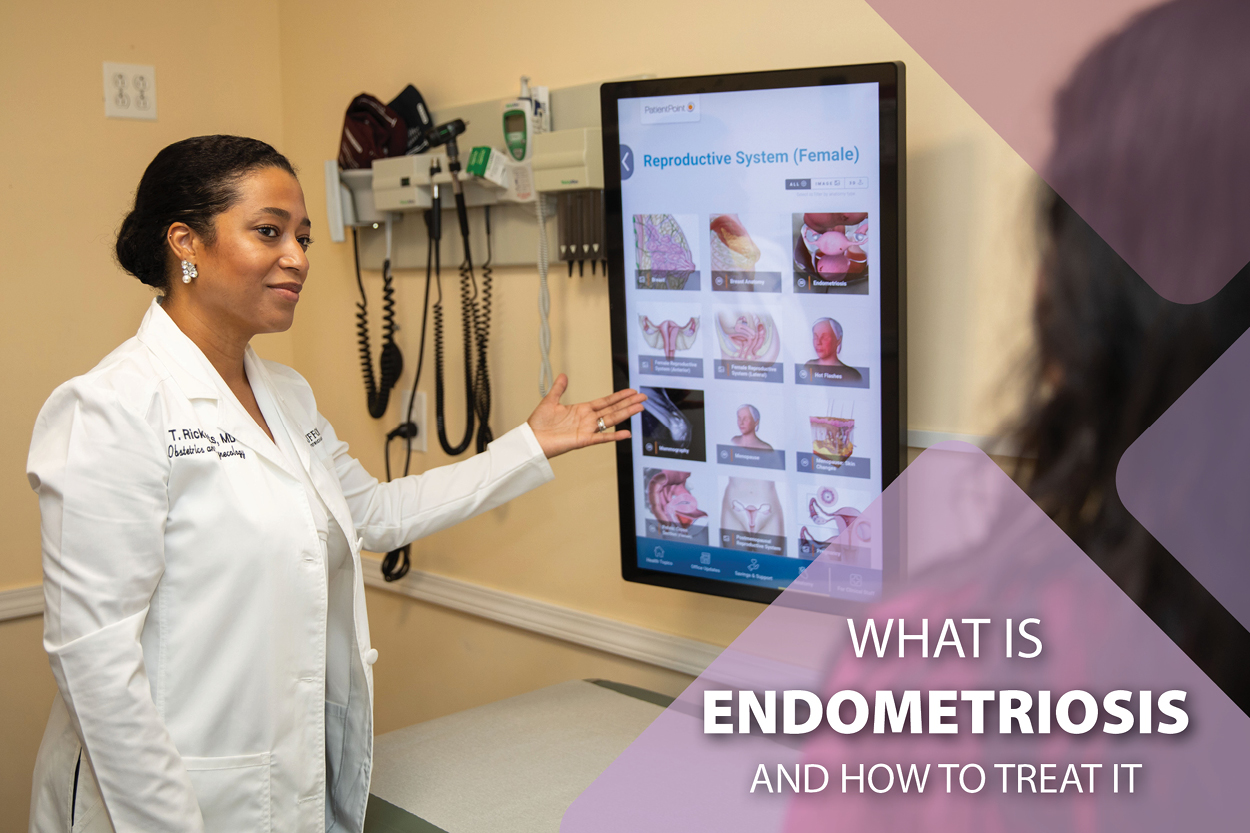What is Endometriosis and How to Treat It
March is National Endometriosis Awareness Month, an opportunity to raise awareness for one of the most common gynecological diseases. Endometriosis affects one in 10 people and can often go undetected for years. In order to treat endometriosis, it’s important to understand the disease and symptoms it can present.
Endometriosis is a condition where tissue similar to endometrium, the normal lining of the uterus, starts to grow outside the uterine wall. Endometriosis primarily affects the pelvic region and may spread to the ovaries, uterus, fallopian tubes, bowel, bladder, and other abdominal organs. As endometriosis progresses, it can cause inflammation, which can lead to adhesions, scarring, and internal bleeding.
Symptoms of endometriosis include lower abdominal pain, pain during menstrual periods, chronic pelvic pain, pain during sex, difficulty getting pregnant, and sometimes infertility. Some people don’t have any symptoms at all.
Endometriosis is a progressive disease. If caught early, it can be treated to stop it from spreading, and causing scarring and adhesions. Treatment options include:
Hormone Therapy
Hormone therapy is used to treat endometriosis-associated pain. Hormones come in the form of a pill, a shot or injection, or a nasal spray, and are used to alter hormones to treat endometriosis symptoms and control the condition. Hormone treatments stop the ovaries from producing hormones, including estrogen, and usually prevent ovulation, which may help slow the growth and local activity of both the endometrium and the endometrial lesions. Hormone treatment also prevents new areas and scars (adhesions) from growing.
Pain Medications
Pain medications range from over-the-counter pain relievers to strong prescription pain relievers, and are used to treat pain caused by endometriosis. These medications may work well if pain or other symptoms are mild.
Surgical Treatments
Healthcare providers may recommend surgery to treat severe pain from endometriosis. Research suggests that some surgical treatments can provide significant relief from endometriosis-related pain. During some surgical treatments, surgeons can locate the areas of endometriosis, and examine the size and degree of growth, and may be able to remove the endometriosis patches at that time. Surgical treatments for endometriosis include:
Laparoscopy
Laparoscopy is the most common surgery doctors use to treat endometriosis.
Laparotomy
A laparotomy is less common and involves a larger incision. This surgery is used to remove endometrial tissues and endometrial-related cysts (endometriomas) from the ovaries.
Hysterectomy
A hysterectomy is a surgical procedure to remove the uterus, and may be recommended to treat endometriosis.
If you’re experiencing pelvic pain, or any other symptoms, contact your OB/GYN to schedule an appointment. Here at NY Health, our team of OB/GYN specialists are dedicated to providing compassionate, patient-centered care, and prioritize patient education and empowerment. We work closely with each patient to develop personalized care plans that meet your unique needs and goals.
Sources:
NIH: What are the treatments for endometriosis?

